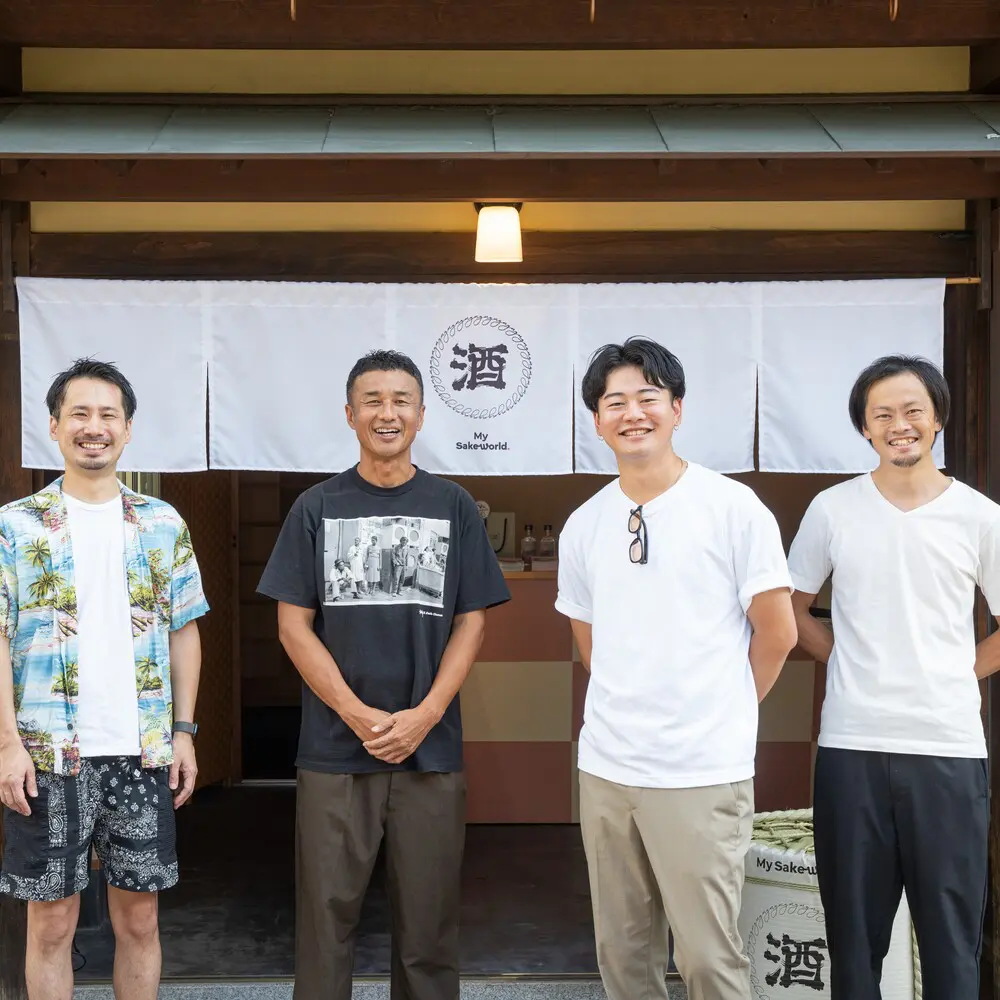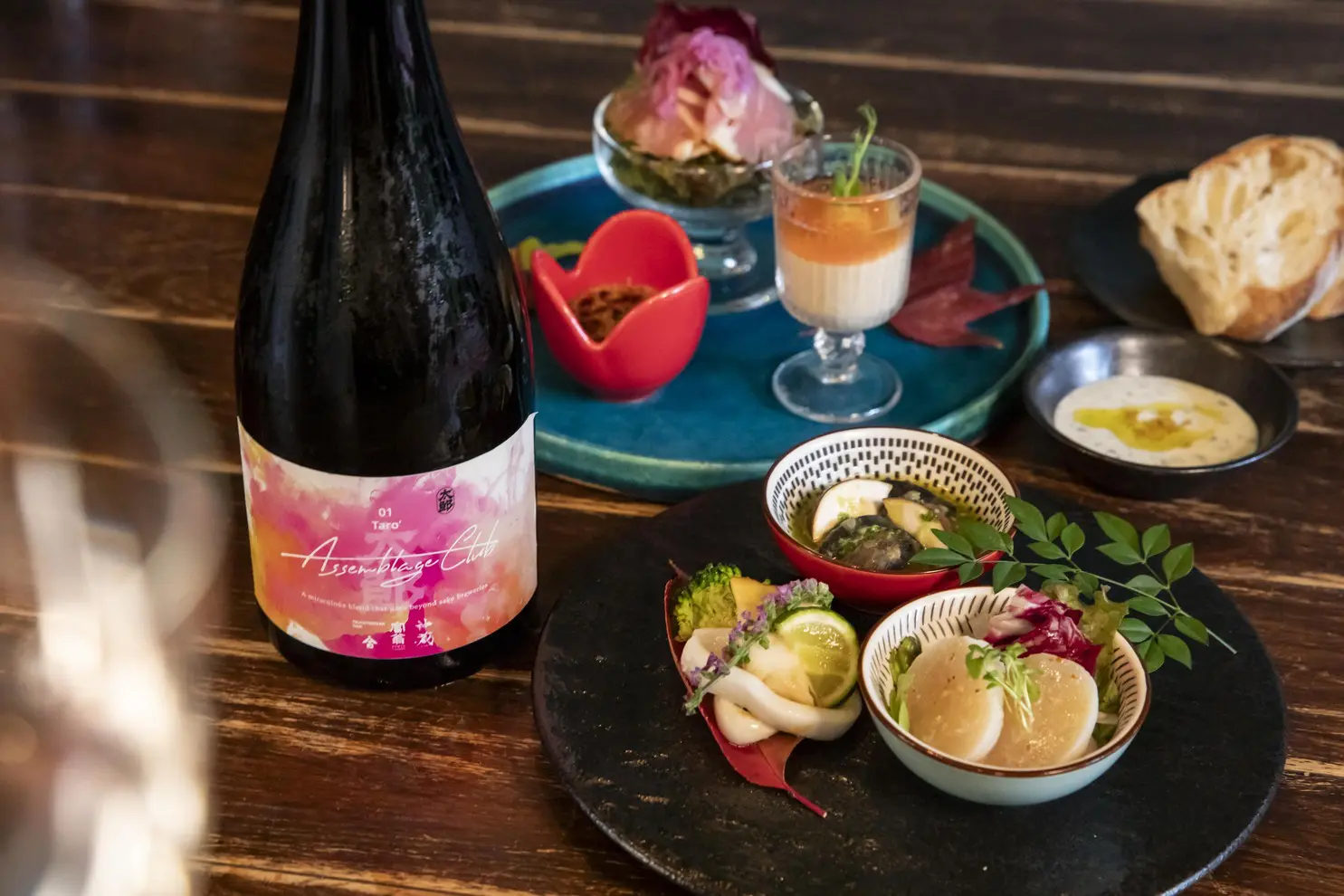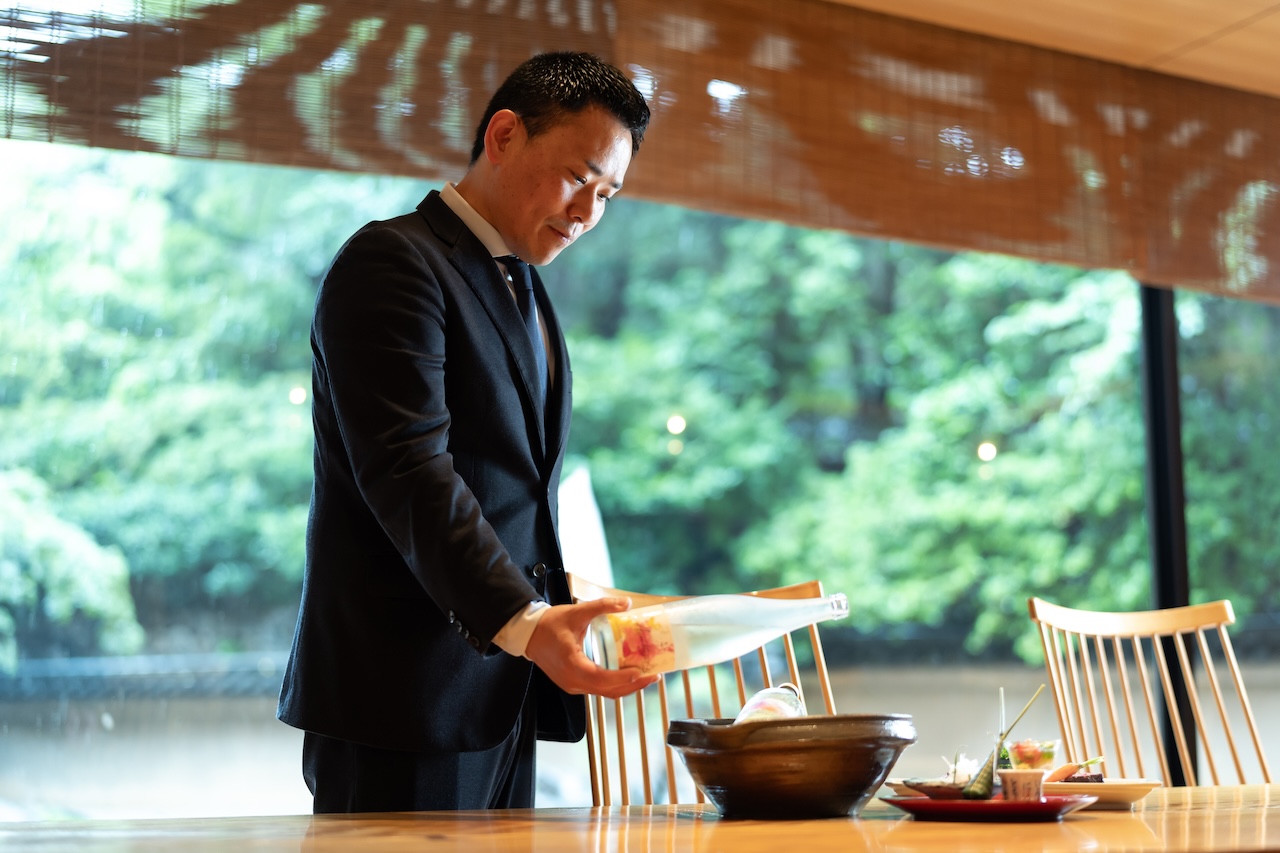Kyoto Nigizono Eel Yondaime Kikukawa was the first to develop a sake blend specifically for eels through the Assemblage Club, which was realized with the cooperation of three sake breweries in Kyoto. The company is expanding its business not only in Japan but also overseas, and has three stores in Kyoto: in Kyoto, in Tsumien, at Kyoto Station Porta, and in Fushimi Inari. For this interview, we asked them why they decided to participate in the unprecedented "sake blending" project at the Fushimi Inari branch, which will open in July 2025, and how it has affected their business since then.
The famous Ippon Eel is melt-in-your-mouth soft and fluffy.
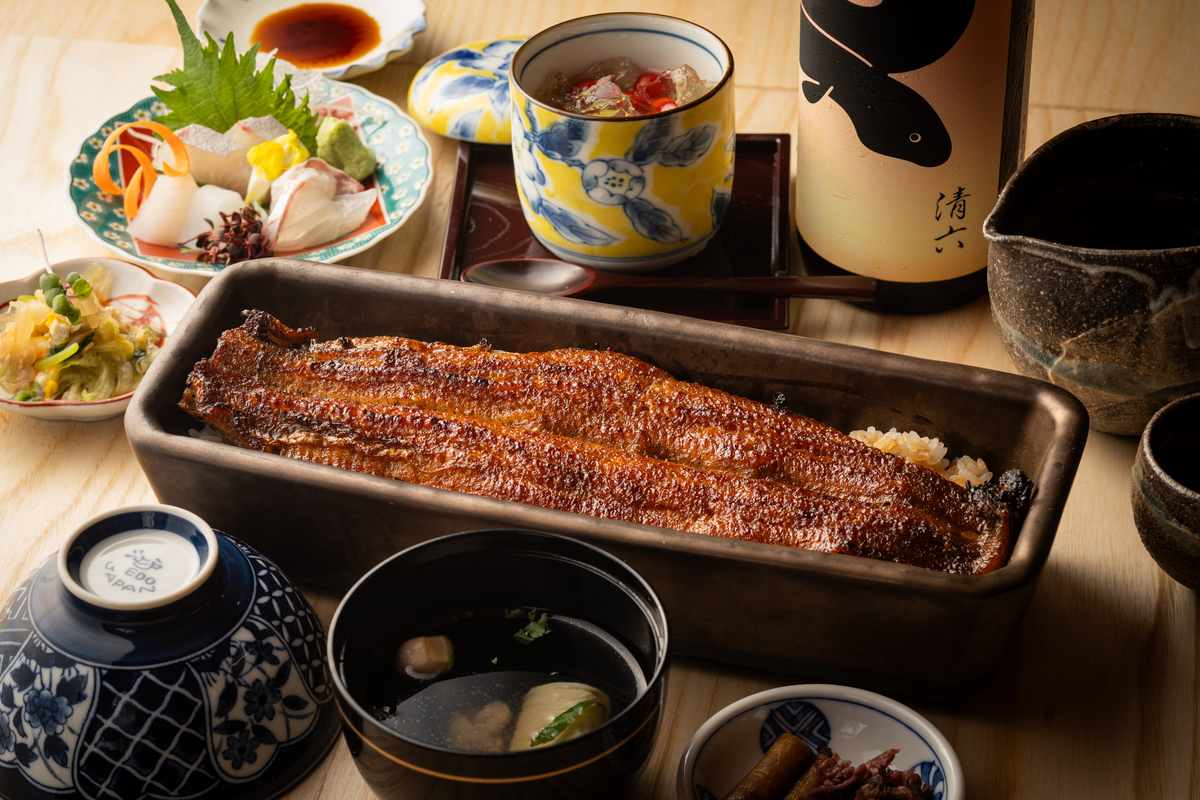
A Kyoto machiya dating back to the Meiji period stands at the end of a narrow alleyway on the back approach to Fushimi Inari Taisha Shrine. The bold "ichi" in black ink on the dignified white noren curtain is impressive. Known as a directly operated store of an eel wholesaler established in 1932, the Fushimi Inari store opened in July this year, the third store in Kyoto following the Gion shop. The famous "Ippon Eel" has a crispy skin grilled over bincho charcoal and a thick meaty flesh with fat and a blissful "melt-in-your-mouth" flavor. In addition to the uniqueness of the eel, the rice is cooked in the way best suited to Gihee VIII's rice to bring out its sweetness, and the uncompromising attitude is evident in everything from the soup stock to pickles and tea, which are the basics of Japanese cuisine.
Eel kabayaki, which is appreciated by all, is perfect for family dinners. A variety of menus suitable for special occasions are available, and we recommend the luxurious set that includes a la carte dishes with eel as the main dish.
Strength and cleanliness made possible by blending

- We would like to ask you about your company's original sake "Seiroku", which was produced by an assemblage of three long-established sake breweries in Kyoto (Tsukinokatsura, Tomio, and Jinzo) to commemorate the opening of "Kyoto Shinen Unagi Yondaime Kikukawa" in 2023. Please tell us about the background of the project.
Mr. Osawa: "First of all, we felt that sake is the best match for Japanese food. We call ourselves the fourth generation, but we have been in business for at most 100 years. In terms of history, Kyoto's sake breweries all have a long tradition. For example, Tokubei Masuda of "Tsukitsukkei" is the 14th generation. We started out with the hope of developing a sake that would match our eel with the help of our seniors in so-called Kyoto's long-established sake breweries. We asked the master blender, Mr. Tokubei Masuda, to first taste the kabayaki and shiroyaki at the Porta restaurant, and asked him to create a sake that would be as strong as the kabayaki sauce, but would also go well with the shiroyaki. Kyoto sake has an impression of being rather soft, but by blending in old sake, we were able to create a sake that has a profound flavor. It is powerful, but not too strong, and has a pleasant taste that makes you want to drink as many glasses as you like, washing away the fat of the eel. Thanks to your support, "Seiroku" has been very well received and is selling like hotcakes (laughs).
-What do you think of the "assemblage" method of blending sake?
Mr. Osawa: "I thought that the assemblage method would make it possible to create sake that would go perfectly with Kikukawa's eel. I thought it would be difficult to make sake from rice and from scratch using the standard brewing method. I am convinced that the assemblage method was the best way to combine sake and bring it to our taste.
Convincing voices for drinks with a story to tell
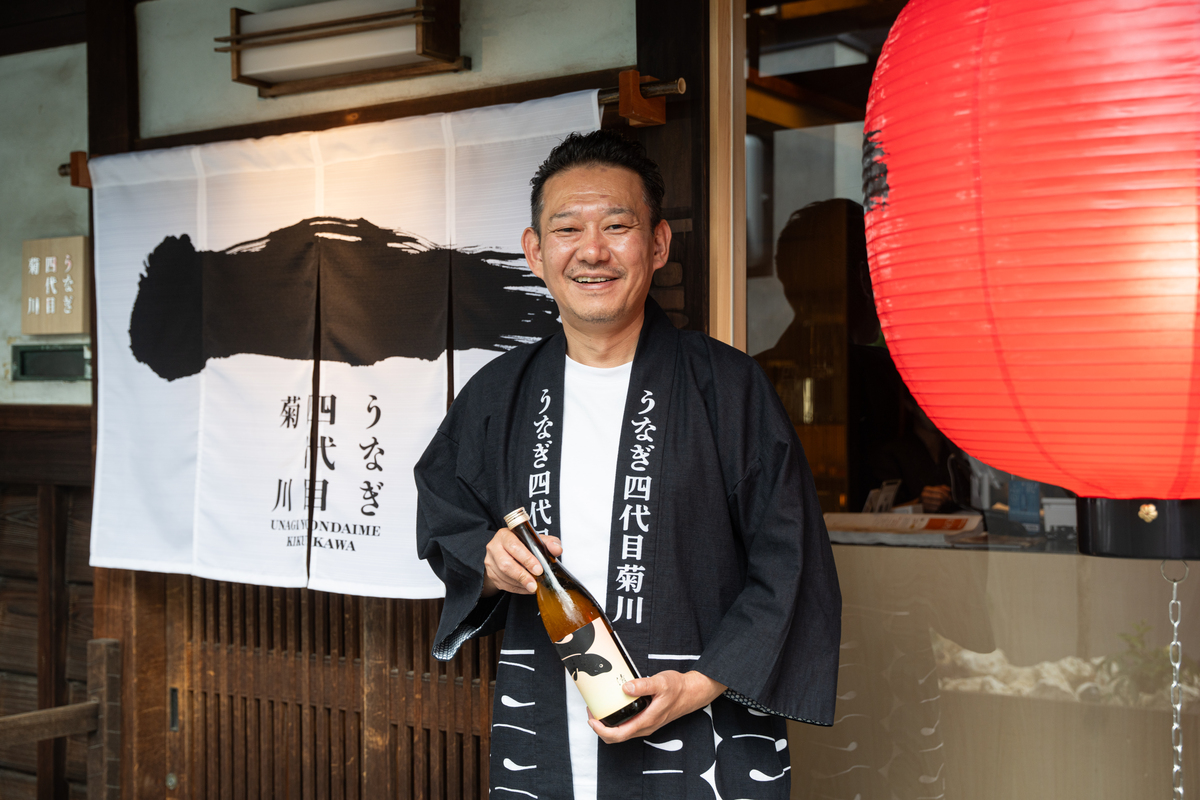
- How is the response from customers to "Seiroku"?
Mr. Osawa: "When I recommend a sake, I tell them the story of how we used a special technique to make our original sake that goes well with eel, and they agree that it is delicious. Many people like it so much that they order a bottle. As is the case with Seiroku, since you have come all the way to Kyoto, we want you to enjoy Kyoto's sake as much as possible at our restaurant and at the Gion branch. We limit our sake selection to Kyoto sake, and we also try to have a selection of beer, whiskey, gin, and wine that are mainly local. The idea of local production for local consumption is a pillar of our business.
-By the way, how did you come up with the name "Seiroku"?
Mr. Osawa: "I heard that it was named after our company's second generation, the grandfather of the current fourth generation.
Pray for good luck with the auspicious red and white eels

-What are your plans for the future?
Mr. Osawa said, "Since we are located near Fushimi Inari Taisha Shrine, we are offering the "Kaiun Red and White Eel" as our limited menu. You can enjoy both kabayaki and shiroyaki at the same time, making this set menu perfect for celebrations and other special occasions. In addition, we are planning to offer a comparison set of eel hitotsumabushi and sea bream chazuke from August, and a set of eel inari sushi and soba noodles from September.
-The menu is getting more and more extensive. I am looking forward to it. Thank you very much for your time today.
This eel specialty restaurant opened in the historic Fushimi Inari area, a location that attracts attention from overseas tourists. Mr. Osawa told us about his desire to "introduce eel culture to the world. We hope that this restaurant will serve as a catalyst so that eel cuisine and sake, the pride of our country, will be loved by many people not only in Japan but also overseas.



![うなぎに合うブレンド日本酒を他社に先駆け開発![京都衹園うなぎ四代目菊川 伏見稲荷店]](https://sakeworld.jp/abc/wp-content/uploads/2025/10/DSC08149.webp)
